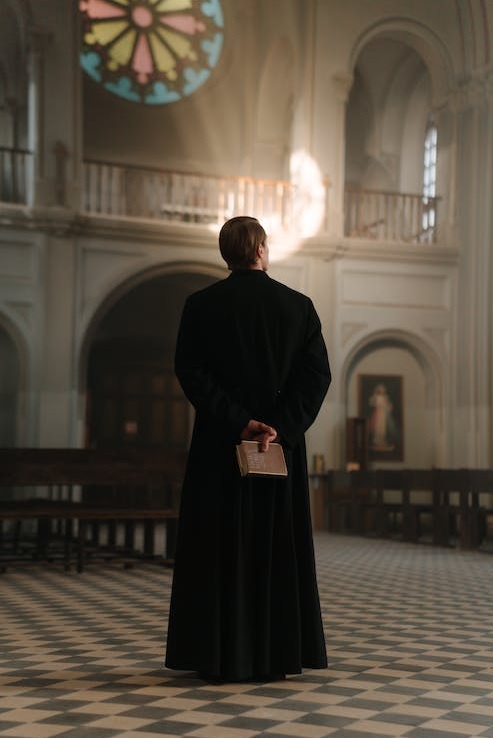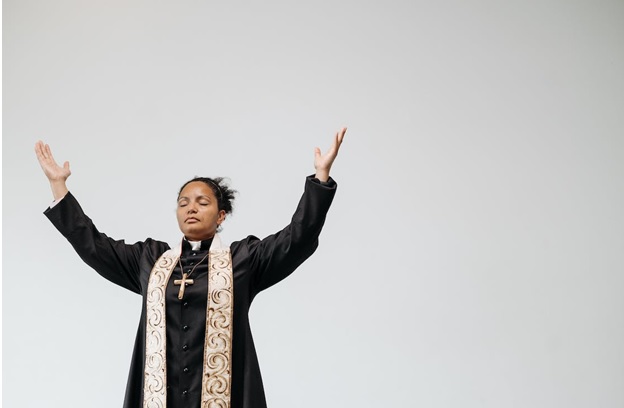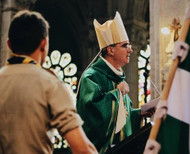The Origins of Pastor Robes and Clerical Garments
Oct 4th 2023
The origin and adoption of clerical garments by different sects of the Christian church is an interesting one. Many of the clerical garments we recognize today sprung up out of or evolved from secular garments, even though prescriptions for their use were becoming codified or adopted into habit over 1000 years ago.
This post will take a quick look at the origins of some of the more recognizable clerical garments.
Early Developments
Early in the history of the Christian Church there was no prescription for priestly vestiture. It should also be noted that neither the early nor modern Christian catalog of vestments is derivative of those utilized by the priest caste of the Old Testament.
Modern Christian clerical garments are different entirely and many are believed to have evolved from secular civilian attire that predominated in the times of the Late Roman Empire.
For several hundred years after Christianity began to spread, there was no uniformity in clerical dress. It was not until the Council of Braga in 572 that clergy were officially required to wear a “Vestis Talaris,” which was akin to a tunic reaching to the feet - not entirely unlike the modern day cassock or alb (see below).
The 692 Council of Trullo established even more stringent prescriptions, requiring clergy to shun the dress of the laity and to wear suitable clothing both when at home and when traveling. Transgressions against this edict were punishable by a temporary excommunication.
This in part illustrates where and when conventions were beginning to form well in advance of the turn of the first millennium - but it does not answer the questions of where these vestments came from in the first place.
The Cassock and Cincture

The cassock robe, which is also known as a soutane, is a long-sleeved, ankle-length garment worn by the clergy in the Roman Catholic Church, Orthodox Churches, and some Protestant sects, such as Lutheran and Anglican denominations.
The cassock is believed to be descended from the Roman tunic of classical antiquity. It may be that the previously mentioned Council of Braga’s requirement for a “Vestis Talaris” prescribed a tunic not unlike the modern cassock.
The word comes to us through the French “casaque,” which is a word for a long coat. It may also be related to the Turkish word “kazak,” for “wanderer” or “nomad,” from which we also get the words “cossack” and “Kazakhstan.”
Originally, the cassock may have simply been a secular garment that was worn due to its thickness for protection against the elements of the cold northern European winters - this would explain its association with a word for “coat.”
Today, the cassock is girt about the midsection by a special type of belt known as a cincture. In Latin, “cinctura” is a word for “girdle,” and it is likely that this clerical accessory also sprung up from the garb of the laity.
For more information and background surrounding the cassock, please consult our previous blog, A History of the Cassock.
The Surplice

The surplice, a piece of white linen or cotton clerical attire with wide sleeves and (at least traditionally) a square yoke neck, is another that likely has secular origins.
The surplice is sometimes worn over the cassock and cincture, and is also worn by choristers, altar servers, acolytes, and clergymen attendant to a celebration or service.
The origins of the surplice are believed to be from outside of Rome, and there is a theory that the surplice originated among the Galician Rite from a different liturgical tunic known as a Celtic Alb.
It may also have originated from a garment known as a “superpelliceum” which was intended to be worn over heavier furs, perhaps as an insulative supplement in cold weather.
The Alb
The alb is like a surplice, as both are white cotton or linen clerical garments, except the alb is ankle length whereas the surplice reaches only to the waist or knees.
This one is believed to be a derivative of the white linen tunic that was worn in Ancient Rome, and may have been the clerical garment referenced in the Council of Braga’s call for a “Vestis Talaris.”
Now widely adopted into a variety of Christian sects, it is believed that the alb was one of the first clerical garments to evolve.
The Stole

Not everyone is in agreement on the origin of clergy stoles, but it is believed that modern stoles may be a derivation of the “stola,” which was a scarf or sash-like vestment reserved for particular members of a given social class.
The stole may also have originated as a separate garment known as an “orarium” that may originally have been used as a sort of general purpose cloth, or even a napkin. Worn by priests presiding over the Eucharist, the early stoles may have been used to wipe the chalice between uses.
This may be the reason that the stole has remained a clerical garment that is closely associated with Eucharistic services.
The Clerical Collar

The clerical collar, while not technically a clerical garment in and of itself, is nonetheless closely related with the clergy.
There are two main types, the tab collar and the banded collar. Modern collars may even be detachable, making it easier to clean the clergy shirt and care for the collar insert.
This is one of the piece of clergy attire that has more modern origins, and it is believed that the clerical collar is of Presbyterian origin. It may have been invented in the 1800s by a Reverend Donald McLeod, of the Church of Scotland.
Despite this, the clergy collar has been adopted by many other denominations around the world, including but not limited to Roman Catholicism, Eastern Orthodoxy, and Anglican, Methodist, and Lutheran Churches.
Quality Clerical Garments at Affordable Prices
Looking for more information on the origins of these or other clerical garments? Are you simply in search of high-quality clerical clothing at affordable prices?
We can help with both. Check out our online shop, visit us in our showroom in Hamilton, New Jersey, or contact us directly at 609-838-7154 for more information and we will be glad to help.
